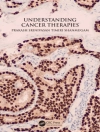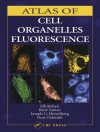Contains the proceedings of the XVI International Symposium on Retinal Degeneration (RD2014), to be held July 13-18, 2014 at the Asilomar Conference Center in Pacific Grove, California. A majority of those who will speak and present posters at the meeting will contribute to this volume. The Symposium addresses the blinding diseases of inherited retinal degenerations, which have no effective treatments and age-related macular degeneration, which has no cures, despite the fact that it is an epidemic among the elderly, with 1 in 3-4 affected by the age of 75. The RD2014 Symposium will focus on the exciting new developments aimed at understanding these diseases and providing therapies for them.
The volume will present representative state-of-the-art research in almost all areas of retinal degenerations, ranging from cytopathologic, physiologic, diagnostic and clinical aspects; animal models; mechanisms of cell death; molecular genetics; and developing potential therapeutic measures such as gene therapy and neuroprotective agents for potential pharmaceutical therapy; and several sight restoration approaches, including optogenetics. While advances in these areas of retinal degenerations will be included, several new topics either were in their infancy or did not exist at the time of the last RD Symposium, RD2012. These include many new developments in sight restoration using optogenetics, retinal or RPE cell transplantation, stem cell approaches and visual prosthetic devices. In addition, major advances will be presented in other basic mechanisms in age-related macular degeneration, several new aspects of gene and antioxidant therapy and revolutionary new imaging and functional testing that will have a huge impact on the diagnosis and following the course of retinal degenerations, as well as to provide new quantitative endpoints for clinical trials. The retina is an approachable part of the central nervous system (CNS), and there is a major interest in neuroprotective and gene therapy for CNS diseases and neurodegenerations, in general. It should be noted that with successful and exciting initial clinical trials in neuroprotective and gene therapy, including the restoration of sight in blind children, the retinal degeneration therapies are leading the way towards new therapeutic measures for neurodegenerations of the CNS. Many of the successes recently reported in these areas of retinal degeneration sprang from collaborations established at previous RD Symposia, and many of those will be reported at the RD2014 meeting and included.
Table of Content
Part I Age-Related Macular Degeneration (AMD).- Apolipoprotein E Isoforms and AMD.- Role of Chemokines in Shaping Macrophage Activity in AMD.- Biology of p62/sequestosome-1 in Age-Related Macular Degeneration (AMD).- Gene Structure of the 10q26 locus: A Clue to Cracking the ARMS2/HTRA1 Riddle?.- Conditional Induction of Oxidative Stress in RPE: A Mouse Model of Progressive Retinal Degeneration.- Therapeutic Approaches to Histone Reprogramming in Retinal Degeneration.- A Brief Discussion on Lipid Activated Nuclear Receptors and Their Potential Role in Regulating Microglia in Age-Related Macular Degeneration (AMD).- Extracellular Matrix Alterations and Deposit Formation in AMD.- The NLRP3 Inflammasome and its Role in Age-related Macular Degeneration.- Oxidative Stress and the Nrf2 Anti-Oxidant Transcription Factor in Age-Related Macular Degeneration.- Aging Changes in Retinal Microglia and their Relevance to Age-related Retinal Disease.- VEGF-A and the NLRP3 Inflammasome in Age-Related Macular Degeneration.- Interrelation Between Oxidative Stress and Complement Activation in Models of Age-Related Macular Degeneration.- Gene-diet Interactions in Age-Related Macular Degeneration.- Challenges in the Development of Therapy for Dry Age-Related Macular Degeneration.- Nanoceria: A Potential Therapeutic for Dry AMD.- β-amyloidopathy in the Pathogenesis of Age-Related Macular Degeneration in Correlation with Neurodegenerative Diseases.- Part II Macular Dystrophies/Inherited Macular Degeneration.- Different Mutations in ELOVL4 Affect Very Long Chain Fatty Acid Biosynthesis to Cause Variable Neurological Disorders in Humans.- Mouse Models of Stargardt 3 Dominant Macular Degeneration.- Current Progress in Deciphering Importance of VLC-PUFA in the Retina.- Malattia Leventinese/Doyne Honeycomb Retinal Dystrophy: Similarities to Age-related Macular Degeneration and Potential Therapies.- Part III Inherited Retinal Degenerations.- Hsp90 as a Potential Therapeutic Target in Retinal Disease.- Leber Congenital Amaurosis: Genotypes and Retinal Structure Phenotypes.- A Chemical Mutagenesis Screen Identifies Mouse Models with ERG Defects.- Ablation of Chop Transiently Enhances Photoreceptor Survival But Does Not Prevent Retinal Degeneration in Transgenic Mice Expressing Human P23H Rhodopsin.- Identification of a Novel Gene on 10q22 Causing Autosomal Dominant Retinitis Pigmentosa (ad RP).- FAM161A and TTC8 Are Differentially Expressed in Non-allelelic Early Onset Retinal Degeneration.- Mutations in the Dynein1 Complex are Permissible for Basal Body Migration in Photoreceptors but Alter Rab6 Localization.- RDS Functional Domains and Dysfunction in Disease.- TULP1 Missense Mutations Induces the Endoplasmic Reticulum Unfolded Protein Response Stress Complex (ER-UPR).- Understanding Cone Photoreceptor Cell Death in Achromatopsia.- Geranylgeranylacetone Suppresses N-methyl-N-nitrosourea-induced Photoreceptor Cell Loss in Mice.- My Retina Tracker™: An On-line International Registry for People Affected with Inherited Orphan Retinal Degenerative Diseases and their Genetic Relatives – A New Resource.- A Mini-Review: Animal Models of GUCY2D Leber Congenital Amaurosis (LCA1).- A Comprehensive Review of Mutations in the MERTK Proto-oncogene.- Part IV In Vivo Imaging and Other Diagnostic Advances.- New Developments in Murine Imaging for Assessing Photoreceptor Degeneration In Vivo.- Reliability and repeatability of Cone Density Measurements in Patients with Congenital Achromatopsia.- Quantitative Autofluorescence in Best Vitelliform Macular Dystrophy: RPE Lipofuscin is Not Increased in Non-Lesion Areas of Retina.- Interpretation of Flood-Illuminated Adaptive Optics Images in Subjects with Retinitis Pigmentosa.- Intra-familial Similarity of Wide-Field Fundus Autofluorescence in Inherited
Retinal Dystrophy.- Wide-Field Fundus Autofluorescence for Retinitis Pigmentosa and Cone/Cone-Rod Dystrophy.- The Development of a Cat Model of Retinal Detachment and Re-Attachment.- Part V Mechanisms of Degeneration.- The Role of X-Chromosome Inactivation in Retinal Development and Disease.- A Non-canonical Role for β-Secretase in the Retina.- The Consequences of Hypomorphic RPE65 for Rod and Cone Photoreceptors.- The Rate of Vitamin A Dimerization in Lipofuscinogenesis, Fundus Autofluorescence, Retinal Senescence and Degeneration.- Can Vitamin A be Improved to Prevent Blindness due to Age-Related Macular Degeneration, Stargardt Disease and Other Retinal Dystrophies?.- Class I Phosphoinositide 3-Kinase Exerts a Differential Role on Cell Survival and Cell Trafficking in Retina.- Cell Cycle Proteins and Retinal Degeneration: Evidences of New Potential Therapeutic Targets.- Neuronal Nitric Oxide Synthase as a Trigger of the N-methyl-N-nitrosourea-induced Photoreceptor Cell Death.- Molecular Principles for Decoding Homeostasis Disruptions in the Retinal Pigment Epithelium: Significance of Lipid Mediators to Retinal Degenerative Diseases.- Aging and Vision.- Part VI Neuroprotection, Small Molecules & Related Therapeutic Approaches.- The Potential Use of PGC-1α and PGC-1β to Protect the Retina by Stimulating Mitochondrial Repair.- Retinal Caveolin-1 Modulates Neuroprotective Signaling.- Photoreceptor Neuroprotection: Regulation of Akt activation through Serine/Threonine Phosphatases, PHLPP and PHLPPL.- The Role of AMPK pathway in Neuroprotection.- Tauroursodeoxycholic Acid Protects Retinal Function and Structure in rd1.- Near-Infrared Photobiomodulation in Retinal Injury and Disease.- Exercise and Cyclic Light Preconditioning Protect Against Light-Induced Retinal Degeneration and Evoke Similar Gene Expression Patterns.- Small Molecules that Protect Mitochondrial Function from Metabolic Stress Decelerate Loss of Photoreceptor Cells in Murine Retinal Degeneration Models.- Histone Deacetylase: Therapeutic Targets in Retinal Degeneration.- Therapeutic Approach of Nanotechnology for Oxidative Stress Induced Ocular Neurodegenerative Diseases.- Transscleral Controlled Delivery of Geranylgeranylaceton Using a Polymeric Device Protects Rat Retina Against Light Injury.- Targeting the Proteostasis Network in Rhodopsin Retinitis Pigmentosa.- Part VII Gene Therapy & Antisense.- Gene Therapy for MERTK-Associated Retinal Degenerations.- Tamoxifen-containing Eye Drops Successfully Trigger Cre-mediated Recombination in the Entire Eye.- Distinct Expression Patterns of AAV8 Vectors with Broadly Active Promoters from Subretinal Injections of Neonatal Mouse Eyes at Two Different Ages.- Characterization of Ribozymes Targeting a Congenital Night Blindness Mutation in Rhodopsin.- Antisense Oligonucleotide Therapy for Inherited Retinal Dystrophies.- Functional Rescue of Retinal Degeneration-Associated Mutant RPE65 Proteins.- Evaluation of Ocular Gene Therapy in an Italian Patient Affected by Congenital Leber Amaurosis Type 2 Treated in Both Eyes.-Part VIII Stem Cells & Cell-based Therapies.- Regenerative Medicine: Solution in Sight.- Personalized Medicine: Cell and Gene Therapy Based on Patient-Specific i PSC-derived Retinal Pigment Epithelium Cells.- Human Retinal Pigment Epithelium Stem Cell (RPESC).- Embryonic Stem Cell‐Derived Microvesicles: Could They Be Used for Retinal Regeneration?.- Intravitreal Implantation of Genetically Modified Autologous Bone Marrow-Derived Stem Cells for Treating Retinal Disorders.- Gliosis Can Impede Integration Following Photoreceptor Transplantation into the Diseased Retina.- Interkinetic Nuclear Migration in the Regenerating Retina.- Part IX Photoreceptors & Inner Retina.- Use of a Machine Learning-Based High Content Analysis Approach to Identify Photoreceptor Neurite Promoting Molecules.- A Novel Approach to Identify Photoreceptor Compartment-Specific Tulp1 Binding Partners.- Thyroid Hormone Signaling and Cone Photoreceptor Viability.- In-Depth Functional Diagnostics of Mouse Models by Single-Flash and Flicker Electroretinograms without Adapting Background Illumination.- The Role of Intraflagellar Transport in the Photoreceptor Sensory Cilium.- Regulation of Retinal Development Via the Epigenetic Modification of Histone.- The Potential Role of Flavins and Retbindin in Retinal Function and Homeostasis.- Identification of Tyrosine O Sulfated Proteins in Cow Retina and the 661W Cell Line.- The Function of Arf-like Proteins ARL2 and ARL3 in Photoreceptors.-Characterization of Antibodies to Identify Cellular Expression of Dopamine.- Receptor 4.- A Possible Role of Neuroglobin in the Retina After Optic Nerve Injury: A Comparative Study of Zebrafish and Mouse Retina.- JNK Inhibition Reduced Retinal Ganglion Cell Death After Ischemia/Reperfusion In Vivo and After Hypoxia In Vitro.- Cell Fate of Müller Cells During Photoreceptor Regeneration in an MNU-induced Retinal Degeneration Model of Zebrafish.- Polymodal Sensory Integration in Retinal Ganglion Cells.- Pigment Epithelium-derived Factor, a Protective Factor for Photoreceptors In Vivo.- Part X Retinal Pigment Epithelium (RPE).- The m TOR Kinase Inhibitor INK128 Blunts Migration of Cultured Retinal Pigment Epithelial Cells.- Live Imaging of Lyso Tracker-Labelled Phagolysosomes Tracks Diurnal Phagocytosis of Photoreceptor Outer Segment Fragments in Rat RPE Tissue Ex Vivo.- Cre Recombinase: You Can’t Live with It, and You Can’t Live without It.- Efficiency of Membrane Protein Expression Following Infection with Recombinant Adenovirus of Polarized Non-Transformed Human Retinal Pigment Epithelial Cells.- Contribution of Ion Channels in Calcium Signaling Regulating Phagocytosis: maxi K, Cav1.3 and Bestrophin-1.- Lysosomal Trafficking Regulator (LYST).- Live-cell Imaging of Phagosome Motility in Primary Mouse RPE Cells.- RPE Cell and Sheet Properties in Normal and Diseased Eyes.- Valproic Acid Induced Human Retinal Pigment Epithelial Cell Death as Well as its Survival After Hydrogen Peroxide Damage is Mediated by P38 Kinase.- Blockade of Mer TK Activation by AMPK Inhibits RPE Cell Phagocytosis.- Modulation of V-ATPase by βA3/A1-crystallin in the Retinal Pigment Epithelial Cells.- Proteomic Profiling of Cigarette Smoke Induced Changes in Retinal Pigment Epithelium Cells.- Reduced Metabolic Capacity in Aged Primary Retinal Pigment Epithelium (RPE) is Correlated with Increased Susceptibility to Oxidative Stress.












